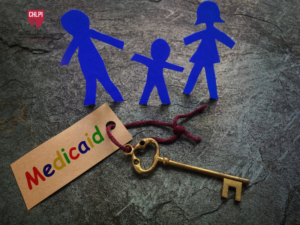Originally written by Amanda Little and published on The Washington Post on January 6, 2023.
One of the final, unseen triumphs of the 117th Congress was the passage of the Food Donation Improvement Act, an obscure bill that could catalyze a major effort to solve the twin crises of hunger and food waste in America. But the landmark legislation will succeed only if private-sector leaders make sure it lives up to its promise.
Consider the following paradox: Americans waste more per capita than any nation on earth — a staggering 40% of our food ends up rotting in fields and landfills — while at the same time our population is becoming increasingly hungry. In the wake of the pandemic, 35 million Americans are food insecure — about 10% of our population — and the combined pressures of inflation, geopolitical conflict and climate change will only worsen the strain on global food production.
For years, there have been bills in the congressional pipeline designed to redirect food surpluses to populations in need, and for years they’ve been ignored. It’s time for action. The Food Donation Improvement Act, which was signed into law Thursday by President Joe Biden, is the first of many important measures that can resolve the gross contradiction between food excess and food scarcity in America.
Not since President Bill Clinton signed the Bill Emerson Good Samaritan Food Donation Act in 1996 has the US passed major food-donation legislation. The new legislation updates the Emerson act with common-sense and long-overdue reforms that will enable schools, farmers, restaurants, businesses, manufacturers and retailers to donate surplus food directly to members of their community.
The new rules ease the burden of liability so that qualified private donors that already have safety checks in place aren’t held legally responsible for food quality or spoilage. The Food Donation Improvement Act removes a provision requiring private-sector donations be funneled through food-relief organizations. Under the Emerson act, a school or restaurant, for example, can’t legally donate its excess food directly to hungry families in its community. It must usher the donation through a food bank that may be a long drive away, only to have the food redirected back to recipients in its own neighborhood. Ditto for local farms, supermarkets, corporate cafeterias, food manufacturing plants and other high-volume food facilities that too often opt to trash their surpluses rather than deal with legally complex and logistically cumbersome donation processes.
Such barriers have led to staggering waste: The private sector squanders billions of pounds of nutritious food annually. And while the Food Donation Improvement Act can help curb this crisis, there is much more work to do. It’s not enough, going forward, to simply make it easier to donate food to populations in need. There needs to be incentives, and even requirements, to do so.
Business leaders should, themselves, make it a priority in 2023 to recover and redirect the food their companies squander. But members of the 118th Congress can also provide a carrot, significantly expanding available tax incentives for food donations by passing another bill already in the legislative pipeline known as the Further Incentivizing Nutritious Donations, or FIND, Food Act. FIND deserves the same windfall of bipartisan and NGO support that enabled the passage of the food donation act.
Governors nationwide can also help by following the example of New York and California — states that already have laws in place requiring donations from certain businesses with high food volumes and safety checks in place.
The passage of the Food Donation Improvement Act should spur support for companion bills that have already been introduced, most notably the Food Date Labeling Act, which was proposed and passed over in the last three Congresses. It would increase food recovery by standardizing expiration dates on perishable foods such as meat and dairy. Currently, expiration date standards vary wildly from state by state, leading to the dumping of healthy, high-nutrient foods. Lawmakers should also get behind the ambitious Zero Food Waste Act, introduced in 2021, which would encourage the development of local polices that restrict food from going to landfills, while also helping to fund crucial infrastructure for food donation at a mass scale, such as networks of storage facilities and distribution fleets.
It’s hard to overstate how shameful, how anachronistic — and above all, how solvable — the parallel crises of hunger and waste in America are. “Hunger is not inevitable,” said US Representative Jim McGovern of Massachusetts, one of the sponsors of the food donation act, as he pushed for passage of the bill last month. “We don’t have a shortage of food; we have a mismatch between abundance and need — a mismatch we can solve.”
Solving it won’t be easy. Food-related legislation is notoriously difficult to pass because it spans multiple agencies, including the Department of Agriculture, the Food and Drug Administration, the Environmental Protection Agency and many committees in Congress, making it difficult to usher through big pieces of legislation with all the necessary components.
But crucial momentum is building, thanks to the coalition of non-governmental organizations and institutions including the Harvard Law School Food Law and Policy Clinic, WeightWatchers International Inc., Food Tank, Grubhub and the Natural Resources Defense Council. These and other groups focused on food justice helped build the critical mass of bipartisan support that pushed the donations act through at the eleventh hour.
We can hope, if not assume, that this support will continue to grow. The twin goals of solving hunger and curbing food waste have never been more urgent nor more relevant across party lines. Against the backdrop of a punishing war in Ukraine, increasingly volatile climate conditions, brittle supply chains and spreading famines worldwide, there is simply no more room for profligate waste.


